Research Area F - Publications 2012
24-Dec-2012
Am. Chem. Soc., online article
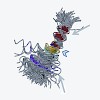
The etiology of Alzheimer’s disease depends on the relative abundance of different amyloid-β (Aβ) peptide species. These peptides are produced by sequential proteolytic cleavage within the transmembrane helix of the 99 residue C-terminal fragment of the amyloid precursor protein (C99) by the intramembrane protease γ-secretase. Intramembrane proteolysis is thought ...
03-Dec-2012
Cellular and Molecular Life Sciences, 2012, 10.1007/s00018-012-1230-z, published on 03.12.2012
Cellular and Molecular Life Sciences, online article
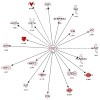
In the mammalian retina, light signals generated in photoreceptors are passed to bipolar and horizontal cells via synaptic contacts. In various pathological conditions, these second-order neurons extend neurites into the outer nuclear layer (ONL). However, the molecular events associated with this neurite outgrowth are not known. Here, we characterized the ...
14-Nov-2012
The Journal of Neuroscience, online article
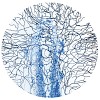
Mitochondria provide ATP, maintain calcium homeostasis, and regulate apoptosis. Neurons, due to their size and complex geometry, are particularly dependent on the proper functioning and distribution of mitochondria. Thus disruptions of these organelles and their transport play a central role in a broad range of neurodegenerative diseases. While in vitro studies ...
04-Oct-2012
Angew. Chem., 2012, DOI: 10.1002/anie.201203769, Volume 51, Issue 44, pages 11162–11165, published on 04.10.2012

Transfer RNAs (tRNAs) are adapter molecules needed to translate genetic information into a peptide sequence. At the ribosome, the anticodon of each tRNA reads the corresponding codon of the messenger RNA. This anticodon– codon interaction allows the ribosome_s large subunit to catalyze amide-bond formation between the cognate amino acids present at the 3’ ...
13-Sep-2012
Nature Protocols, online article
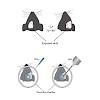
Neurons in the mammalian brain receive thousands of synaptic inputs on their dendrites. In many types of neurons, such as cortical pyramidal neurons, excitatory synapses are formed on fine dendritic protrusions called spines. Usually, an individual spine forms a single synaptic contact with an afferent axon. In this protocol, we describe a recently established ...
30-Aug-2012
The Journal of Biological Chemistry, online article
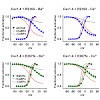
Cav1.4 L-type Ca2+ channels are crucial for synaptic transmission in retinal photoreceptors and bipolar neurons. Recent studies suggest that the activity of this channel is regulated by the Ca2+-binding protein 4 (CaBP4). In the present study, we explored this issue by examining functional effects of CaBP4 on heterologously expressed Cav1.4. We show that CaBP4 ...
28-Aug-2012
Nature Communications, 2012, doi:10.1038/ncomms2035, 3, Article number: 1031 published on 28.08.2012
Nature Communications, online article

Engineering efforts of genetically encoded calcium indicators predominantly focused on enhancing fluorescence changes, but how indicator expression affects the physiology of host organisms is often overlooked. Here, we demonstrate biocompatibility and widespread functional expression of the genetically encoded calcium indicator TN-XXL in a transgenic mouse model. ...
16-Jul-2012
Hum. Mol. Genet., 2012, doi: 10.1093/hmg/dds290, published on 16.07.2012
Hum. Mol. Genet., online article

Retinitis pigmentosa (RP) is a group of genetically heterogeneous severe retinal diseases commonly leading to legal blindness. Mutations in the CNGB1a subunit of the rod cyclic nucleotide-gated (CNG) channel have been found to cause RP in patients. Here, we demonstrate the efficacy of gene therapy as a potential treatment for RP by means of recombinant ...
13-Jul-2012
EMBO reports, online article
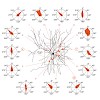
Dendritic spines arise as small protrusions from the dendritic shaft of various types of neuron and receive inputs from excitatory axons. Ever since dendritic spines were first described in the nineteenth century, questions about their function have spawned many hypotheses. In this review, we introduce understanding of the structural and biochemical properties of ...
19-Jun-2012
The Journal of Biological Chemistry, online article
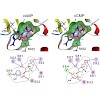
Activation of hyperpolarization-activated cyclic nucleotide-gated (HCN) channels is facilitated in vivo by direct binding of the second messenger cAMP. This process plays a fundamental role in the fine-tuning of HCN channel activity and is critical for the modulation of cardiac and neuronal rhythmicity. Here, we identify the pyrimidine cyclic nucleotide cCMP as ...
16-May-2012
PNAS, online article

Alzheimer’s disease (AD) is characterized by a progressive dysfunction of central neurons. Recent experimental evidence indicates that in the cortex, in addition to the silencing of a fraction of neurons, other neurons are hyperactive in amyloid-β (Aβ) plaque-enriched regions. However, it has remained unknown what comes first, neuronal silencing or hyperactivity, ...
19-Apr-2012
The Journal of Pharmacology and Experimental Therapeutics, online article
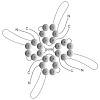
The transient receptor potential (TRP) channels TRPML1, TRPML2, and TRPML3 (also called mucolipins 1–3 or MCOLN1–3) are nonselective cation channels. Mutations in the Trpml1 gene cause mucolipidosis type IV in humans with clinical features including psychomotor retardation, corneal clouding, and retinal degeneration, whereas mutations in the Trpml3 gene cause ...
10-Apr-2012
Nature Communications, online article

The accumulation of amyloid-β in the brain is an essential feature of Alzheimer’s disease. However, the impact of amyloid-β-accumulation on neuronal dysfunction on the single cell level in vivo is poorly understood. Here we investigate the progression of amyloid-β load in relation to neuronal dysfunction in the visual system of the APP23×PS45 mouse model of ...
09-Apr-2012
JBC, online article

Cyclic nucleotide-gated (CNG) channels play a pivotal role in phototransduction. Mutations in the cone CNG channel subunits CNGA3 and CNGB3 account for >70% of all known cases of achromatopsia. Cones degenerate in achromatopsia patients and in CNGA3−/− and CNGB3−/− mice. This work investigates the molecular basis of cone degeneration in CNG channel deficiency. As ...
08-Mar-2012
Neuron, online article

Calcium ions generate versatile intracellular signals that control key functions in all types of neurons. Imaging calcium in neurons is particularly important because calcium signals exert their highly specific functions in well-defined cellular subcompartments. In this Primer, we briefly review the general mechanisms of neuronal calcium signaling. We then ...
27-Feb-2012
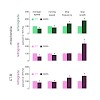
Axonal transport deficits have been reported in many neurodegenerative conditions and are widely assumed to be an immediate causative step of axon and synapse loss. By imaging changes in axonal morphology and organelle transport over time in several animal models of amyotrophic lateral sclerosis (ALS), we now find that deficits in axonal transport of organelles ...
12-Jan-2012
Investigative Ophthalmology & Visual Science, online article
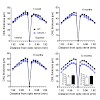
Purpose. To investigate rod function and survival after cone dysfunction and degeneration in a mouse model of cone cyclic nucleotide-gated (CNG) channel deficiency. Methods. Rod function and survival in mice with cone CNG channel subunit CNGA3 deficiency (CNGA3−/− mice) were evaluated by electroretinographic (ERG), morphometric, and Western blot analyses. The ...










